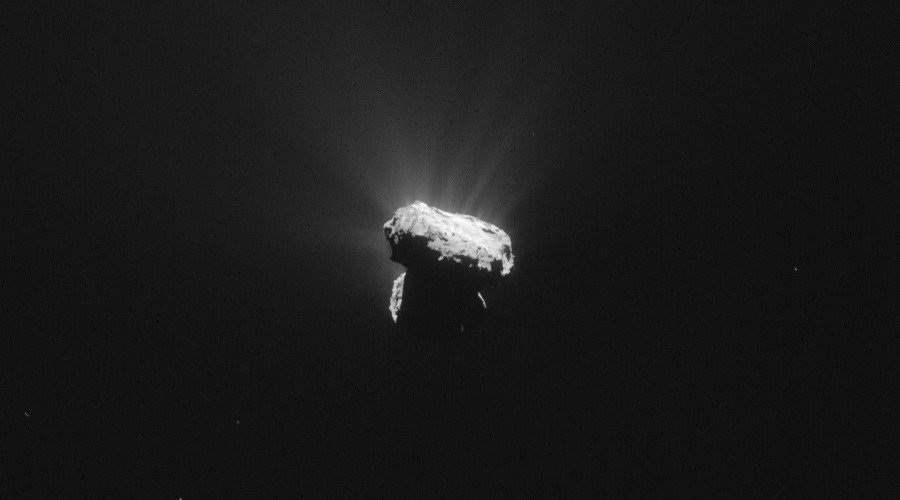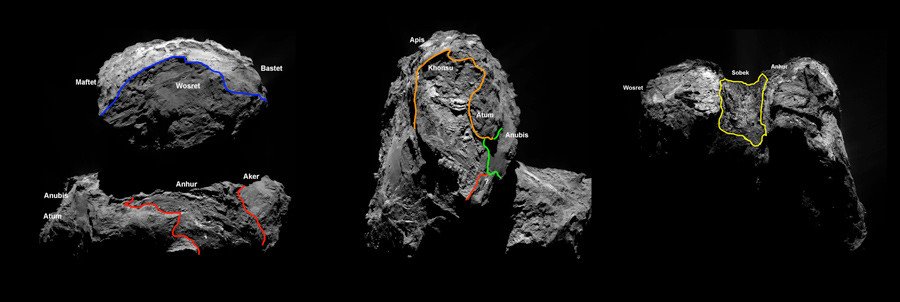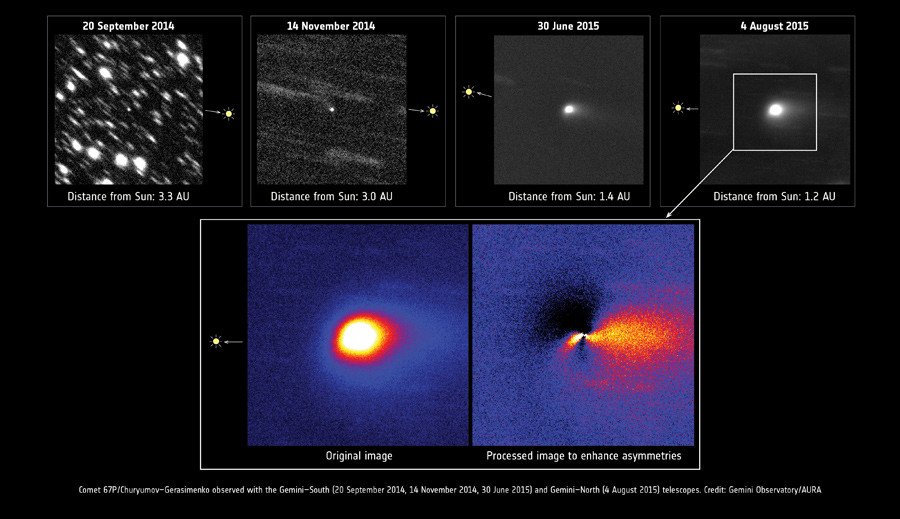Space milestone: Rosetta probe witnesses comet’s closest approach to sun (PHOTOS)

A big day has come for the already-famous Rosetta space probe, on a historic mission to collect data from Comet 67P/Churyumov–Gerasimenko: it managed to capture the comet making its closest approach to the sun.
The European Space Agency (ESA) reported the event in a press release.
Comet #67P just hours before #perihelion2015. Read about @ESA_Rosetta's big day in the Sun: http://t.co/o8gRrZO4L4pic.twitter.com/hXMGUqhquG
— ESA (@esa) August 13, 2015The ESA has also determined the exact moment of the so-called perihelion, the point in the orbit of a space body (in this case the comet) where it’s nearest to its star (the sun). The historic event, long-awaited on social media, occurred at 02:03 GMT on Thursday when the comet came within 186 million km of the sun.
Hello, Sun! Passing through #perihelion2015 with #67P & @philae2014! Full report later today: http://t.co/k3ZTvLvwiNpic.twitter.com/fAX0uOj9SC
— ESA Rosetta Mission (@ESA_Rosetta) August 13, 2015Happy!!! #perihelionparty#perihelion2015@DesignDataGmbH@ESA_Rosettapic.twitter.com/THMlWpVr42
— Leonor Ana Hernandez (@LeoAstronomada) August 12, 2015Finally @ESA_Rosetta! I thought you wouldn't make it for #perihelion2015 !
Wait,what? Perihelion? @DesignDataGmbHpic.twitter.com/G3sPg99ESR
— Adrien Olivencia (@adrienolivencia) August 12, 2015“It’s exciting to reach the milestone of perihelion, and we look forward to seeing how this amazing comet behaves as we move away from the Sun with it over the coming year,” ESA’s Rosetta mission manager Patrick Martin said.

READ MORE: Philae comet probe wakes up, reports after 7 months without contact – ESA
The agency says that the activity of the comet, which was named after Soviet astronomers Klim Churyumov and Svetlana Gerasimenko, is clearly seen in the images.
“Activity will remain high like this for many weeks, and we’re certainly looking forward to seeing how many more jets and outburst events we catch in the act, as we have already witnessed in the last few weeks,” acting Rosetta project scientist Nicolas Altobelli said.
#Perihelion2015 - The full story of my big day in the Sun: http://t.co/uC62fWffPUpic.twitter.com/eJ8bRhf6xb
— ESA Rosetta Mission (@ESA_Rosetta) August 13, 2015READ MORE: Rosetta’s comet 67P now in color… kind of (PHOTO)
According to Rosetta’s data, every second the comet is “spewing up to 300kg of water vapor – roughly the equivalent of two bathtubs.” ESA says this is “a thousand times more” than was observed by the probe this time in 2014.
Rosetta also recorded “an outflow rate of just 300 grams per second,” which, according to the agency is “equivalent to two small glasses of water.”

“In recent days, we have been forced to move even further away from the comet. We’re currently at a distance of between 325km and 340km this week, in a region where Rosetta’s startrackers can operate without being confused by excessive dust levels – without them working properly, Rosetta can’t position itself in space,” Sylvain Lodiot, ESA’s spacecraft operations manager, said.
Celebrating year at #67P & #perihelion2015 with new interactive #NavCam comet viewer. Enjoy! http://t.co/EUfLgUAOk0pic.twitter.com/zGYYA9OSYH
— ESA Rosetta Mission (@ESA_Rosetta) August 13, 2015READ MORE: Home to extraterrestrials? Philae probe could be sitting on comet filled with alien life
However, the nucleus of the comet is “shedding up to 1,000kg of dust per second” which can create dangerous working conditions for the space probe, according to ESA.

Philae probe that accompanied the Rosetta landed on the comet back in November. The accomplishment was sensational, as the European Space Agency (ESA) wowed the world with Philae landing on the target and discovering carbon-based organic molecules before going into hibernation mode to preserve remaining power. In the middle of June, Philae reawakened, after recharging its solar panels, and reported back.












